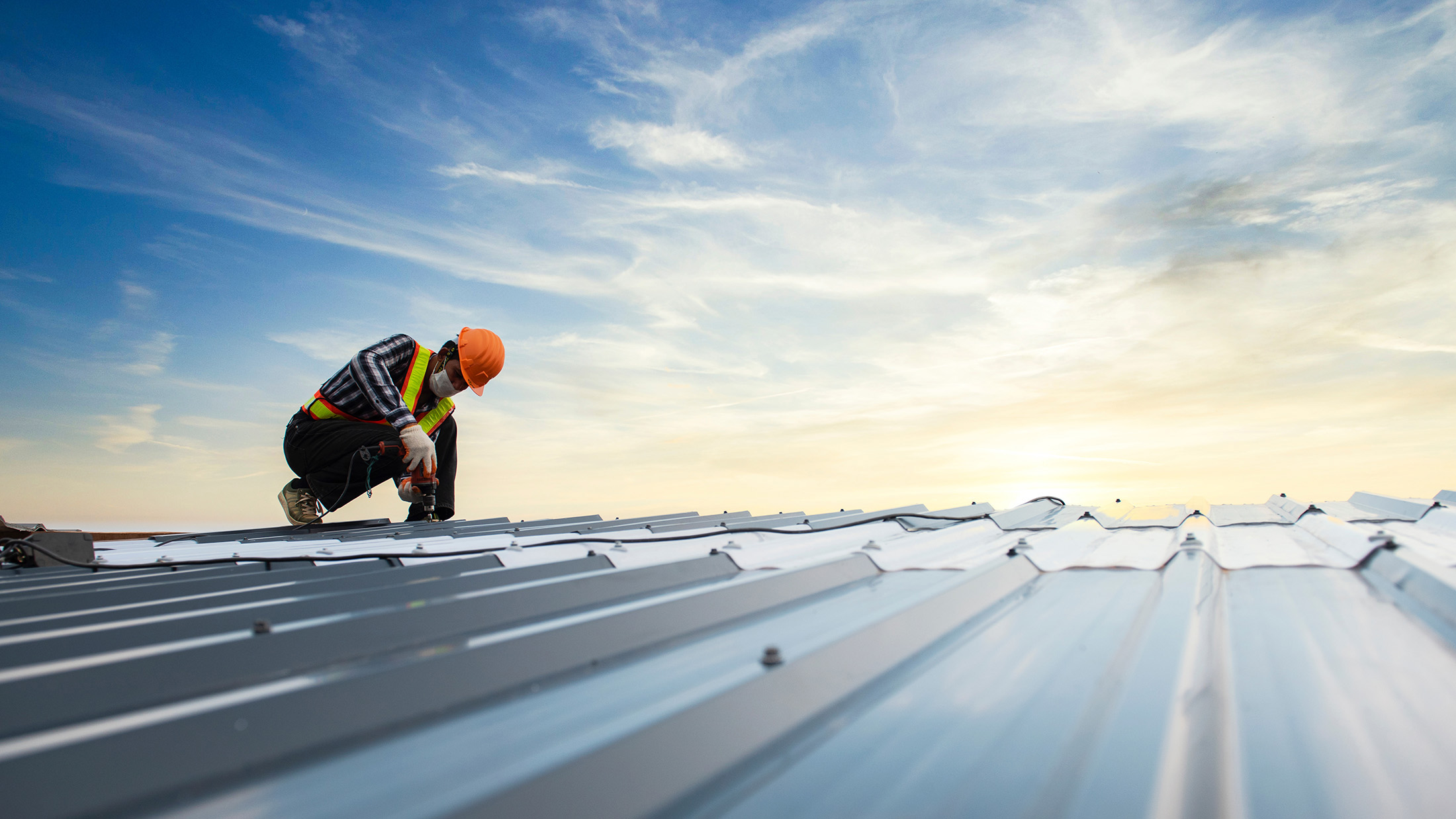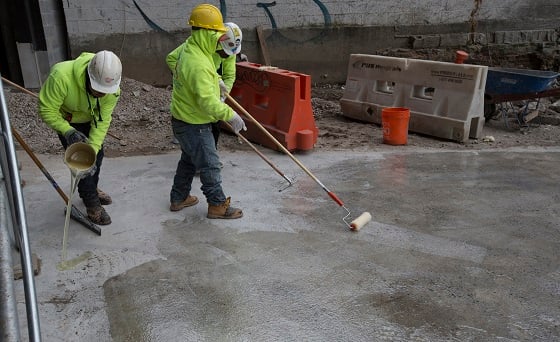French drain installation Omaha: What to Expect
Wiki Article
Sorts of Waterproofing: Discovering the Various Methods and Their Applications
Waterproofing is a vital element of building and upkeep. It shields structures from the detrimental effects of water damage. There are several approaches offered, each with its distinct applications and advantages. From membrane layer systems to cementitious services, comprehending these options is important for reliable implementation. The selection of waterproofing technique can greatly affect resilience and longevity. Exploring these different methods discloses their distinctive advantages and possible challenges, motivating additional factor to consider of ideal solutions.Membrane Waterproofing Equipments
Membrane waterproofing systems serve as a vital obstacle versus water intrusion in various frameworks. These systems typically include thin sheets made from materials like rubber, polycarbonate, or asphalt, which are used to surface areas to stop moisture infiltration. They can be installed over or listed below quality and are specifically reliable in areas prone to high water exposure, such as basements, roofing systems, and foundations.The installation procedure involves cleansing the substrate, applying adhesives or primers, and exactly suitable the membrane to guarantee total insurance coverage. Membrane layer systems can be either fully stuck, mechanically connected, or laid loose, depending on the particular needs of the project. They offer sturdiness and adaptability, fitting structural movements without jeopardizing their waterproofing abilities. Furthermore, these systems can be enhanced with extra layers for enhanced defense. Ultimately, membrane waterproofing systems are vital for safeguarding frameworks versus water damage and preserving long-lasting integrity.Liquid-Applied Waterproofing Coatings
Liquid-applied waterproofing coatings offer a flexible service for safeguarding surfaces from water infiltration - Landscape drainage Omaha. These finishings include liquid products that, when applied, form a smooth, flexible membrane layer. Their flexibility permits for application on numerous substrates, including concrete, steel, and wood. The layers can be used in diverse environments, from property to industrial settings, making them suitable for roofs, structures, and below-grade structures.One considerable advantage of liquid-applied coverings is their capability to adapt irregular forms and penetrate splits, producing a durable barrier versus wetness. They typically show superb bond properties and resistance to UV radiation, making sure long life and longevity. In addition, the application procedure is usually uncomplicated, permitting fast installation and lowered labor prices. This approach additionally lessens the risk of water pooling, as the continual layer successfully routes water away from susceptible locations. In general, liquid-applied waterproofing layers are an efficient choice for detailed water protectionCementitious Waterproofing Solutions

Cementitious waterproofing services supply a robust option for structures requiring reputable moisture protection. These systems mostly make use of a mix of concrete, sand, and chemical ingredients to develop a water resistant obstacle. They are commonly put on surface areas such as concrete walls, foundations, and floorings, supplying a resilient, durable defense versus water intrusion.One of the essential benefits of cementitious waterproofing is its convenience of application; it can be used using a brush, roller, or spray, making it suitable for different job dimensions. In addition, this technique is suitable with many surface areas and can commonly be used along with various other waterproofing techniques.Cementitious united waterproofing options are particularly efficient in environments where water exposure is an issue, such as basements or below-grade frameworks. Their outstanding attachment buildings assure that they bond well with substrates, supplying a strong and impermeable layer against wetness infiltration.
Bentonite Waterproofing
Bentonite waterproofing is a highly reliable technique that uses sodium bentonite clay to develop an all-natural barrier against water. This technique exploits the special properties of bentonite, which broadens upon contact with water, sealing any type of potential leaks and protecting against moisture infiltration. It is commonly used in different applications, including structure walls, tunnels, and keeping wall surfaces, where water resistance is essential.Bentonite can be used in numerous types, such as panels or coverings, providing versatility in setup. Its ability to self-seal makes it an attractive option for areas based on changing dirt or ever-changing water levels. Furthermore, bentonite waterproofing is ecologically pleasant, as it is a natural material that does not present unsafe chemicals into the surroundings.Drainage and External Waterproofing Systems
Reliable waterproofing typically involves a mix of methods, consisting of drainage and outside systems. Drain systems, such as French drains and sump pumps, are created to reroute water far from frameworks, lowering hydrostatic pressure against foundations. These systems are necessary in stopping water build-up that can lead to architectural damages and mold and mildew growth.External waterproofing, on the other hand, includes applying protective barriers to the building's outside. Strategies such as the installment of water resistant membranes, finishes, or sealers can help prevent water infiltration. This technique not just secures the structure but additionally improves the total durability of the structure.Together, drainage and outside waterproofing systems develop an extensive remedy to manage water properly. By executing these techniques, residential property proprietors can protect their financial investments against the damaging effects of moisture, ensuring long-lasting stability and safety and security for their structures.Frequently Asked Inquiries
How Do I Choose the Right Waterproofing Approach for My Task?
Picking the right waterproofing technique depends on variables such as job type, ecological problems, budget, and desired longevity. Assessing these aspects permits informed choices customized to certain demands and demands.
Can Waterproofing Be Applied in Winter Conditions?
Waterproofing can be used in chilly weather condition problems, yet visit their website it calls for certain materials and techniques. Cold temperatures might influence treating times and bond, requiring cautious choice of items designed for low-temperature application.
What Are the Typical Indications of Waterproofing Failing?
Usual indications of waterproofing failing consist of noticeable water discolorations, peeling off paint, wet smells, mold development, and cracks in walls or structures. Water Solutions. These indications recommend that moisture is permeating the obstacle, compromising its efficiencyFor How Long Does Waterproofing Last Prior To Needing Maintenance?
The longevity of waterproofing differs, generally lasting in between 5 to ten years. Variables such as material high quality, environmental conditions, and upkeep techniques affect its sturdiness, requiring regular assessments to ensure reliable security versus water invasion.Are There Eco-Friendly Waterproofing Options Available?
The inquiry of environmentally waterproofing plywood floor friendly waterproofing options exposes an expanding rate of interest in lasting products (Water Solutions Omaha). Various natural compounds, such as plant-based sealers and recycled items, provide effective options while reducing ecological effect, appealing to environmentally aware consumersReport this wiki page